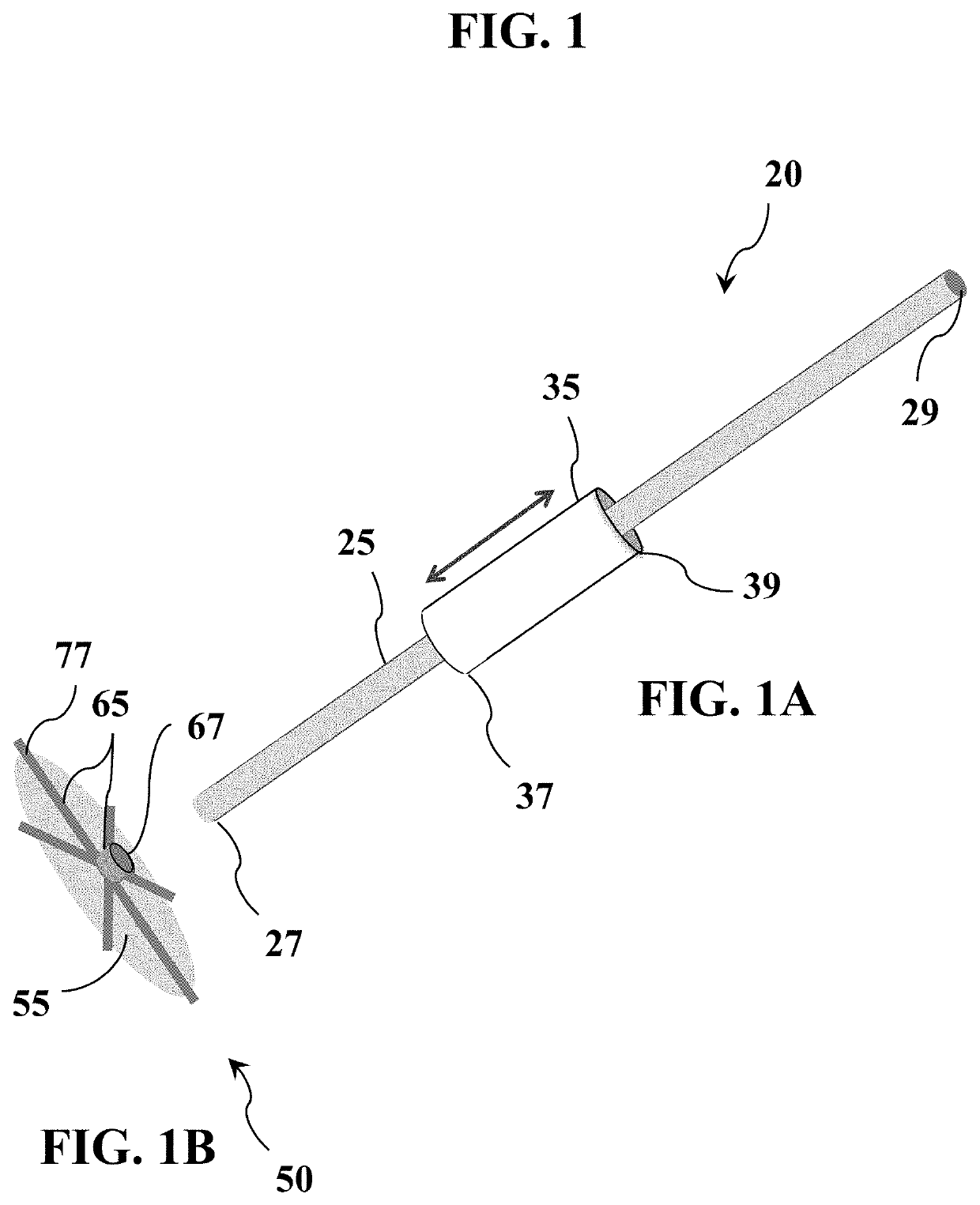Tissue repair and sealing devices having a detachable graft and clasp assembly and methods for the use thereof
a tissue repair and sealing device technology, applied in the field of medicine, can solve the problems of limited working space, poor visualization, restricted surgical access, etc., and achieve the effect of rapid repair of tissue fenestration
- Summary
- Abstract
- Description
- Claims
- Application Information
AI Technical Summary
Benefits of technology
Problems solved by technology
Method used
Image
Examples
example 1
In Vitro Models for Testing Tissue Repair and Sealing Devices
[0209]This Example provides in vitro model systems that may be adapted and employed for the testing various aspects of the tissue repair and sealing devices disclosed herein. Various physical properties and other parameters of tissue repair and sealing devices as disclosed herein may be tested in in vitro model systems, including in vitro model systems that are described in the scientific, medical, and patent literature and that may be configured for testing the repair and sealing of tissue fenestrations with the devices disclosed herein. See, Dafford, The Spine Journal 15(5):1099 (2015); Chauvet, Acta Neurochirurgica 153(12):2465 (2011); and Wang, MATEC Web of Conferences 119:01044 (2017).
[0210]Van Doormaal, Operative Neurosurgey 15(4):425 (2018) and Kinaci, Expert Review of Medical Devices 16(7):549 (2019) disclose in vitro model systems that use fresh porcine dura for testing acute burst pressures and resistance to intr...
example 2
In Vivo Models for Testing Tissue Repair and Sealing Devices
[0216]This Example provides in vivo model systems that may be adapted and employed for the testing various aspects of the tissue repair and sealing devices disclosed herein. Various physical properties and other parameters of tissue repair and sealing devices as disclosed herein may be tested in in vivo model systems, including in vivo model systems that are described in the scientific, medical, and patent literature and that may be configured for testing the repair and sealing of tissue fenestrations with the devices disclosed herein.
[0217]de Almeida, Otolaryngology Head Neck Surgery 141(2):184 (2009) and Seo, Journal of Clinical Neuroscience 58:187 (2018) describe in vivo porcine craniotomy model system that may be adapted for testing the repair of tissue fenestrations by assessing the leakage of cerebrospinal fluids (CSF). In de Almeida, pigs undergo a craniotomy to create fistula through the cribriform plate into the na...
PUM
| Property | Measurement | Unit |
|---|---|---|
| pressure-resistant | aaaaa | aaaaa |
| shape memory | aaaaa | aaaaa |
| superelasticity | aaaaa | aaaaa |
Abstract
Description
Claims
Application Information
 Login to View More
Login to View More - R&D
- Intellectual Property
- Life Sciences
- Materials
- Tech Scout
- Unparalleled Data Quality
- Higher Quality Content
- 60% Fewer Hallucinations
Browse by: Latest US Patents, China's latest patents, Technical Efficacy Thesaurus, Application Domain, Technology Topic, Popular Technical Reports.
© 2025 PatSnap. All rights reserved.Legal|Privacy policy|Modern Slavery Act Transparency Statement|Sitemap|About US| Contact US: help@patsnap.com



